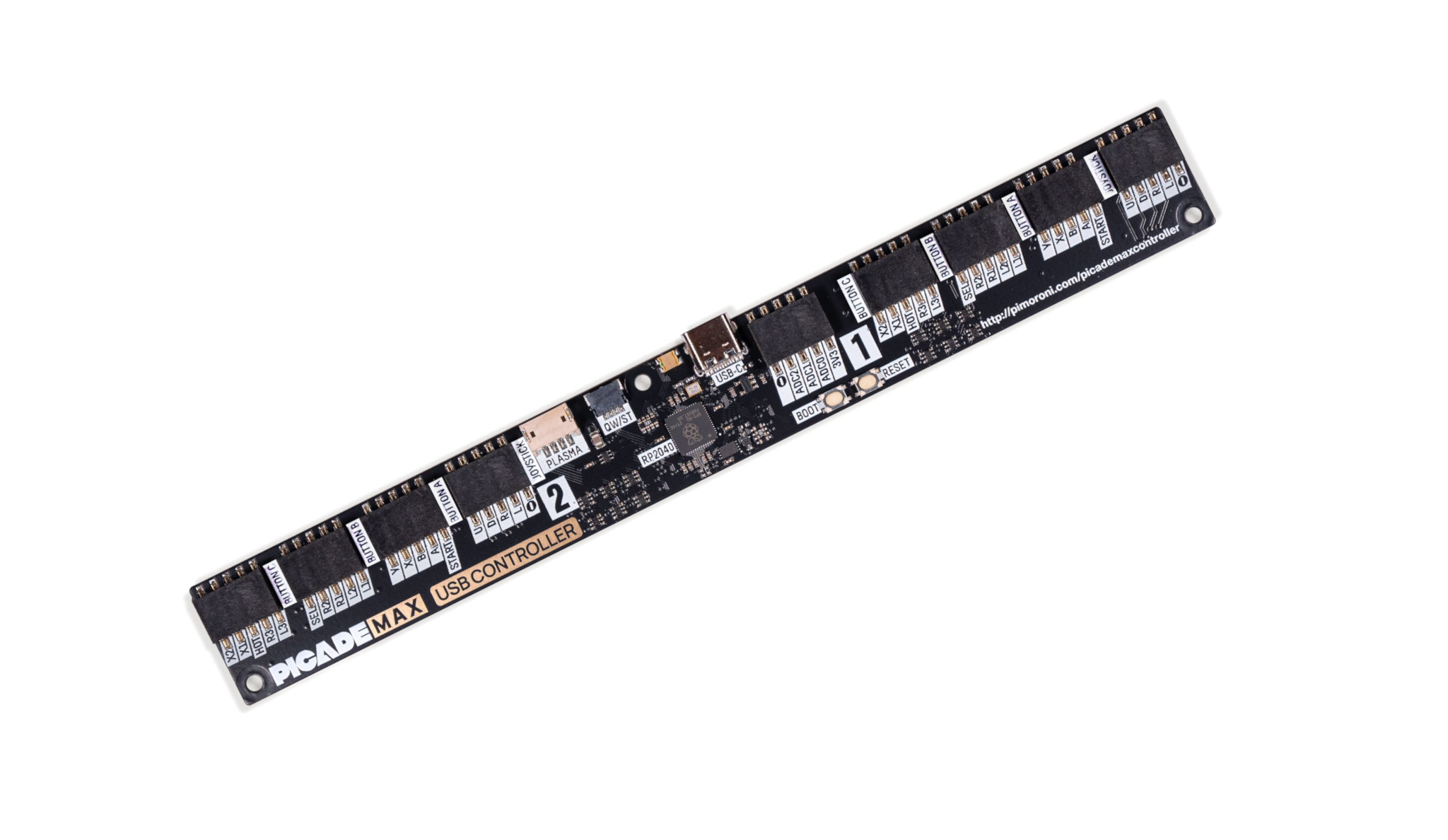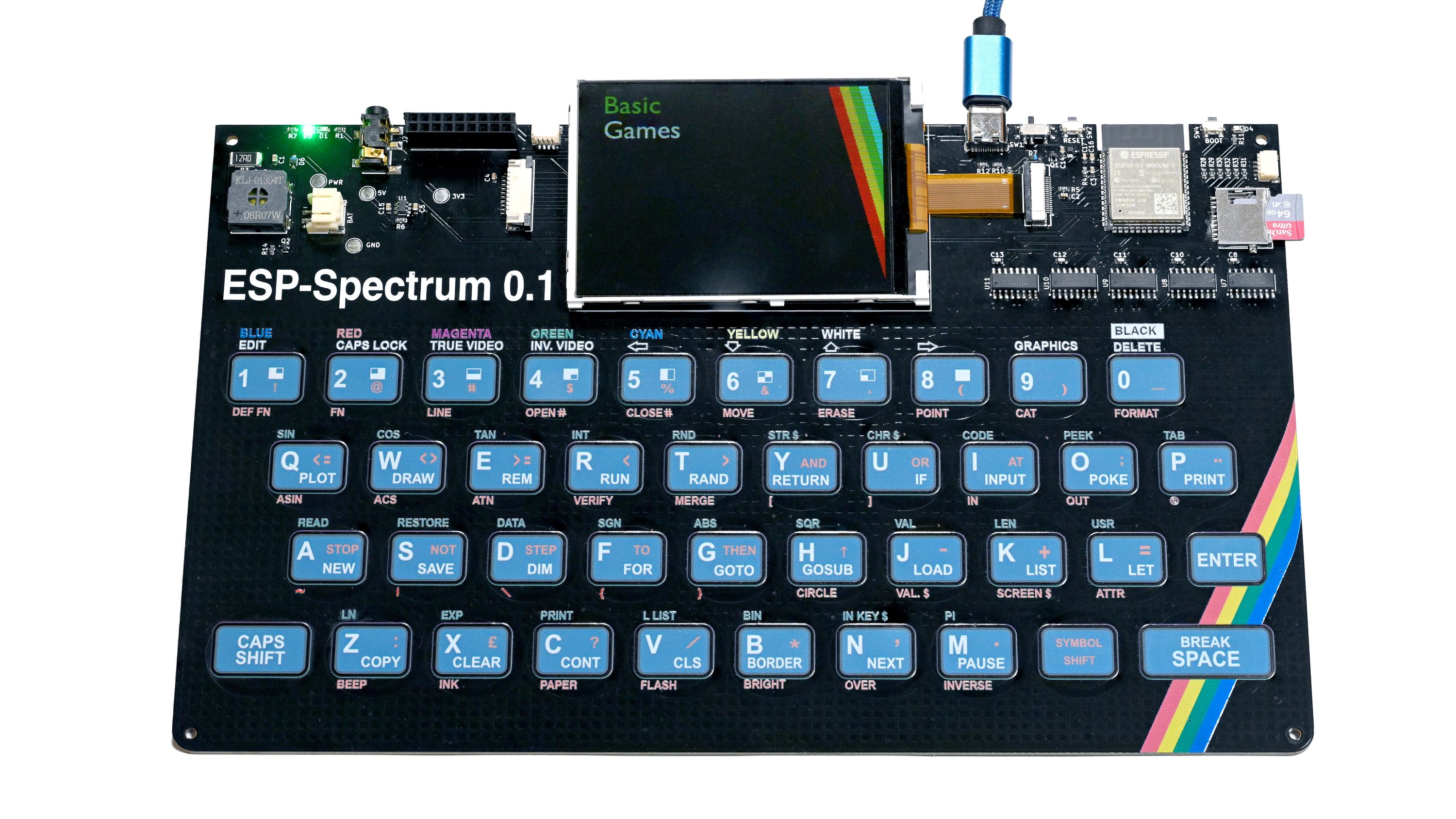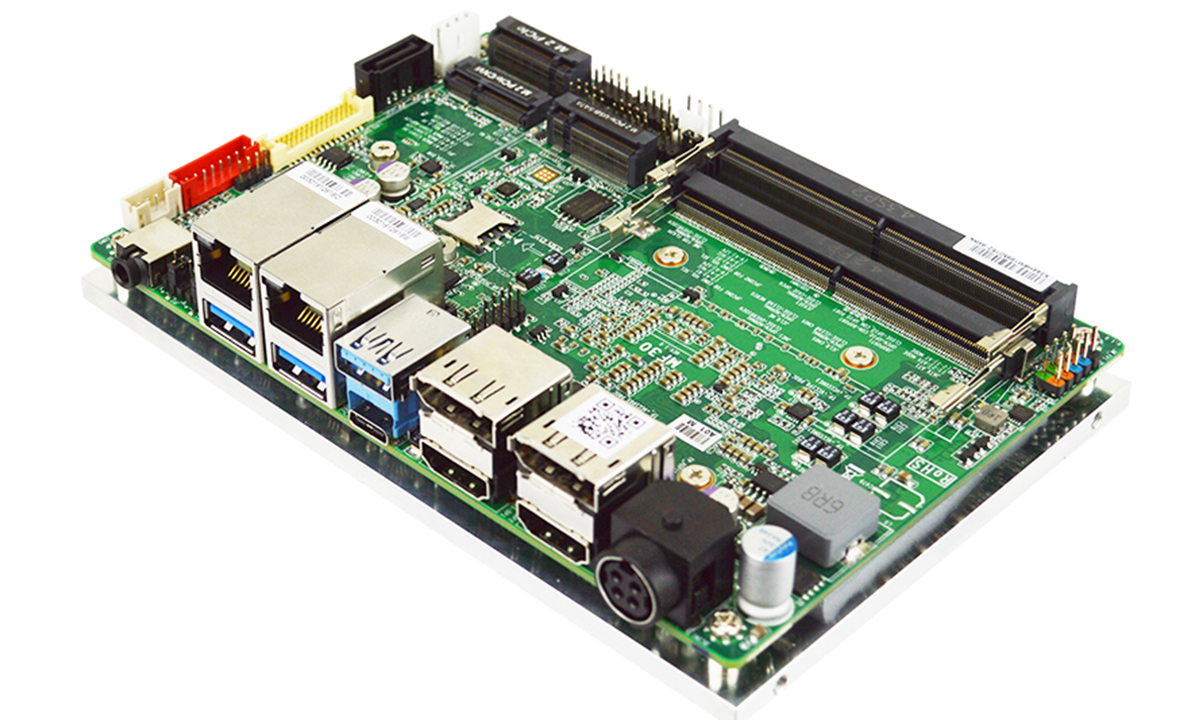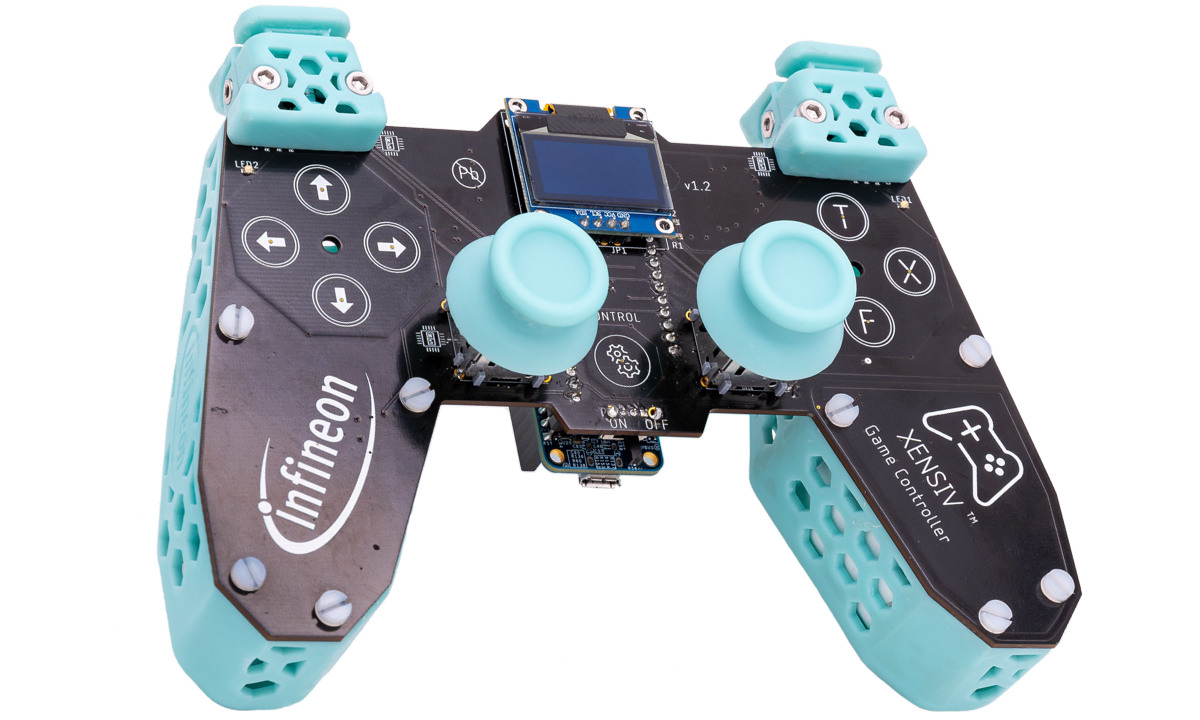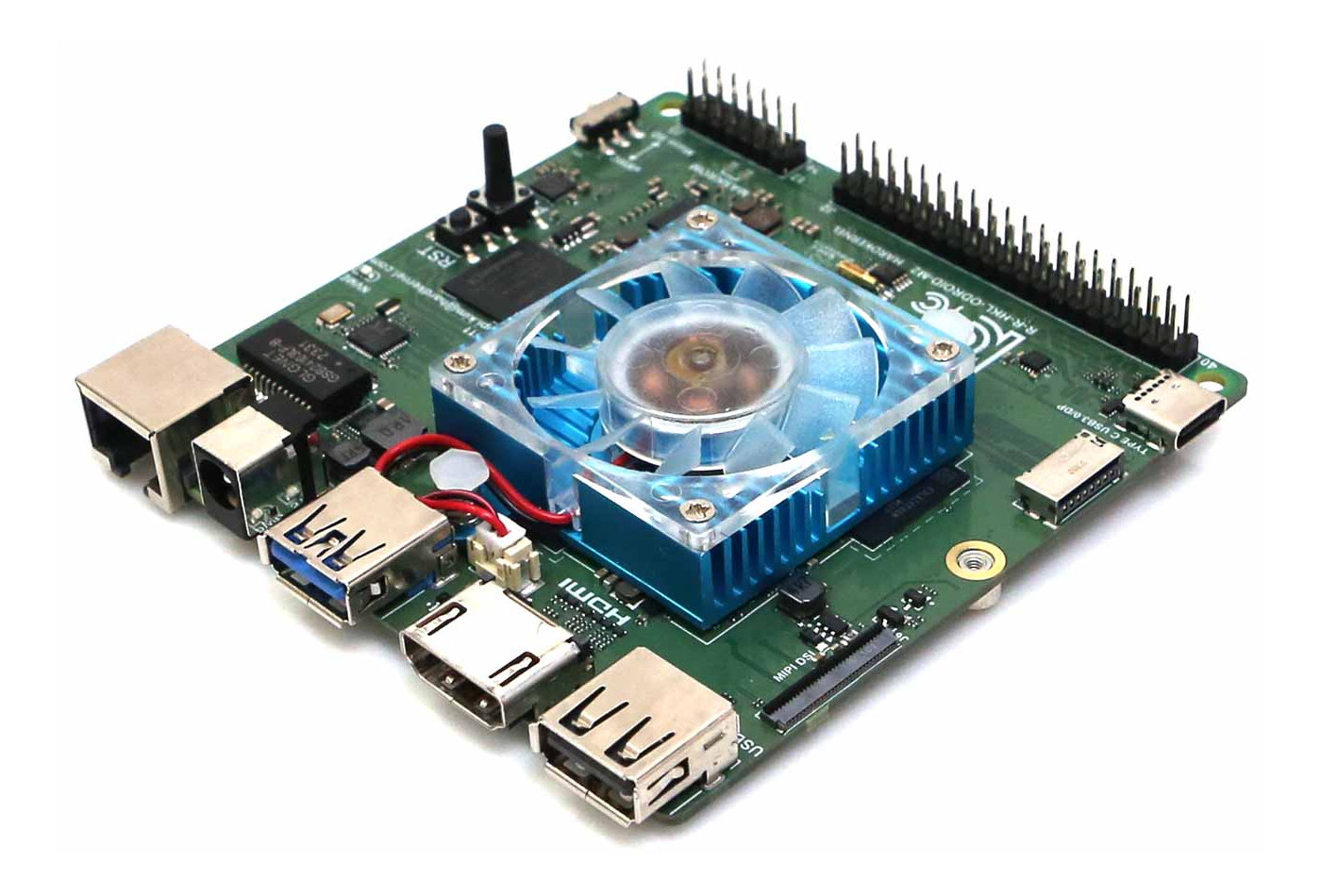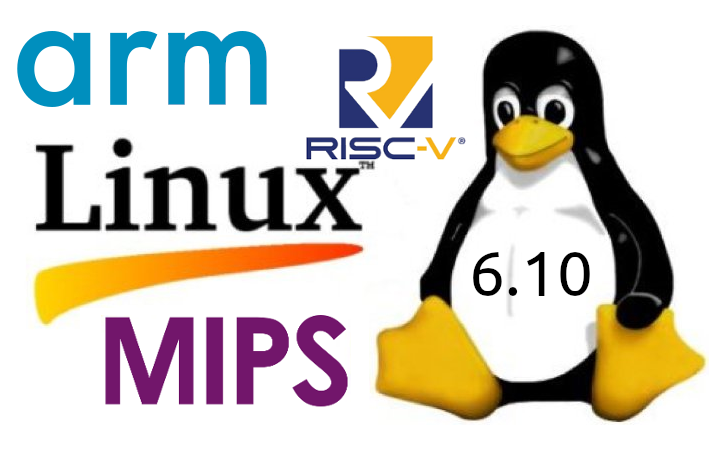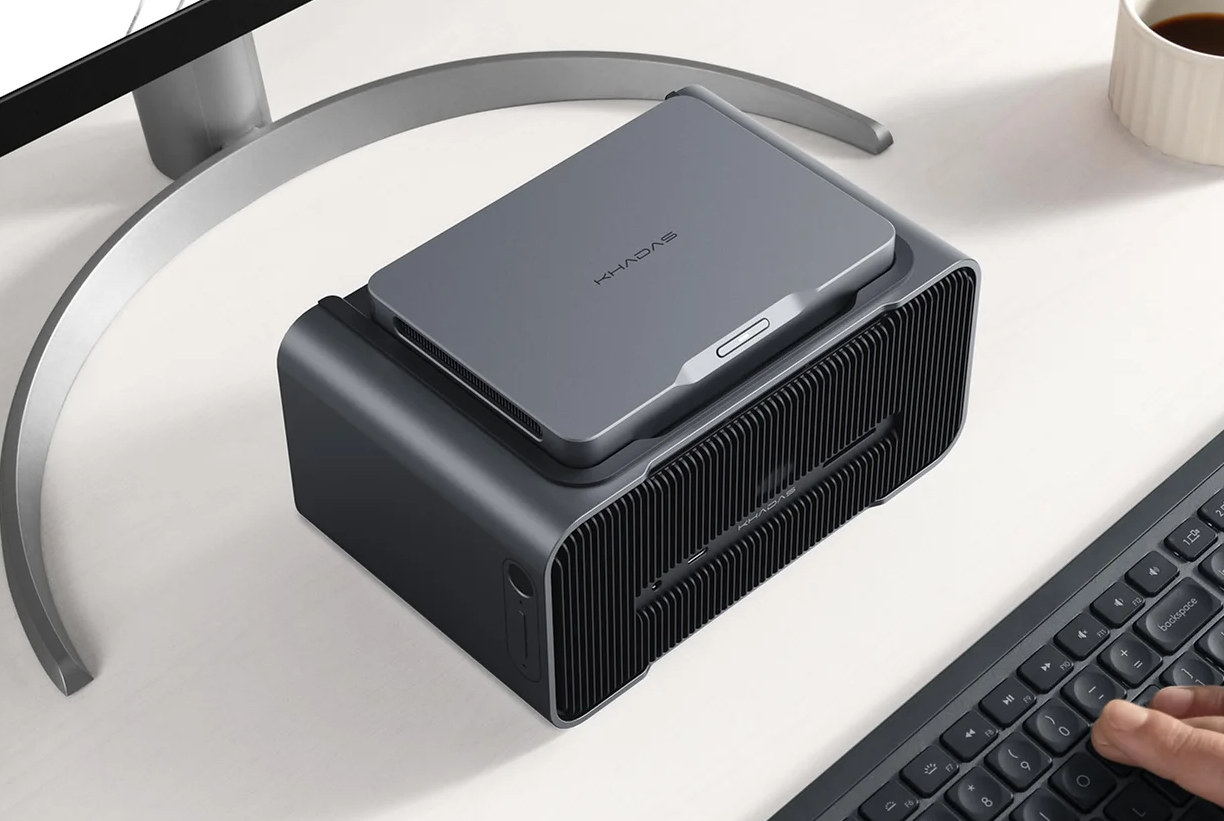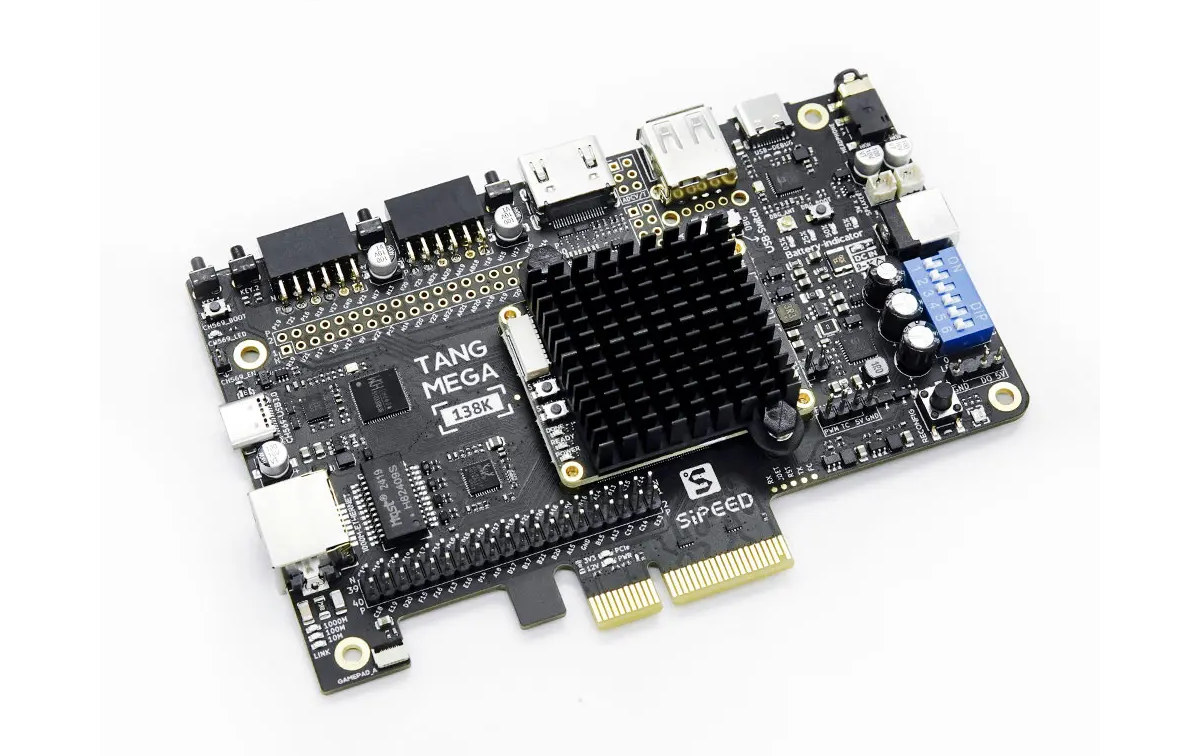Pimoroni Picade Max USB Controller is a Raspberry Pi RP2040 board designed for arcade game consoles with support for two joysticks and up to 30 buttons through standard DuPont socket connectors and one Plasma button connector. The board comes with a 2MB QSPI flash for the firmware, a USB-C port for power and programming, one of DuPont socket connectors exposes three ADC inputs, 3.3V, and GND, and there’s also a Qwicc/Qt STEMMA connector for I2C module expansion, plus BOOT and RESET buttons for programming. Picade Max USB Controller specifications: Microcontroller – Raspberry Pi RP2040 dual-core Arm Cortex M0+ MCU @ 133 MHz with 264kB of SRAM Storage – 2MB QSPI flash supporting XiP USB – 1x USB Type-C port for power and programming User inputs DuPont socket connectors 2x 4-way joystick inputs 30x arcade button inputs Plasma button connector Expansion Qw/ST (Qwiic/STEMMA QT) connector for I2C modules 3x ADC […]
ESP32 Rainbow is an open-source, ESP32-S3-powered ZX Spectrum single board computer (Crowdfunding)
Retrocomputing enthusiasts will be delighted to learn that a new ZX Spectrum replica is on the market: the ESP32 Rainbow. The single board computer swaps the Zilog Z80 for an ESP32-S3 microcontroller chip running an emulator, bringing the classic 80s computer back to life with a modern twist. It features a built-in color display, a microSD card slot for storage, a built-in touch keyboard in the ZX Spectrum style, and a USB Type-C port for power and data. The keyboard was recreated using full-color UV printing and is the most true-to-life component of the ESP32-S3-based ZX Spectrum single board computer. The touch keys won’t likely offer the best typing experience but that is reminiscent of the original ZX Spectrum. A lovely cherry on top is that the onboard USB-C port supports HID and the device can be used as a keyboard on another computer. The ZX Spectrum is one of […]
Jetway MF30 – A 3.5-inch SBC with 13th Gen Intel Core i5-1335U/1335UE Raptor Lake SoC, quad display support
The Jetway MF30 is a 3.5-inch subcompact board powered by 13th-generation Intel Core Raptor Lake-P U-series processors, including the Intel Core i5-1335U and Core i5-1335UE. Designed for embedded applications such as digital signage, control systems, gaming setups, and transportation hubs, the board supports versatile high-definition multi-screen configurations with two HDMI ports, two DisplayPorts, one Type-C DP, and one LVDS/eDP interface. For connectivity, the MF30 offers dual 2.5GbE ports, three USB 3.2 Gen2 ports, four USB 2.0 ports, and a USB Type-C port, while storage options include SATA III port and M.2 (2242/2280) sockets. Jetway is well known for its SBCs, and we’ve previously covered products like the JMTX-ADN8, JNUC-ADN1 mini-ITX motherboard, and JF35-ADN1 3.5-inch motherboard all powered by the Intel N97 CPU. Additionally, we’ve explored other SBCs and Mini PCs featuring 13th-gen Raptor Lake SoCs, including the iBASE IB961, GEEKOM GT13 Pro, Cincoze DV-1100, and LattePanda Sigma. If you’re interested […]
Infineon XENSIV game controller features PSoC 6 MCU, magnetic sensors, and OPTIGA Trust M security
Infineon Technologies XENSIV game controller is a reference design that integrates XENSIV magnetic position sensors for precise joystick control without sensor drift and XENSIV Hall switch triggers for reliable operation. The controller also features capacitive CAPSENSE buttons, CAPSENSE presence detection, and a SPIDER+ rumble driver. These components work together with the PSoC 6 BLE microcontroller to create a low-power, plug-and-play solution. The onboard display allows users to monitor joystick movements, connection status, configurations, and battery information. The controller connects to PCs or smartphones as a USB human interface device (HID) without requiring manual configuration or driver installation. It also supports Bluetooth Low Energy and uses capacitive presence detection to optimize battery life. The design includes a PSoC 6 debugger and supports customizable shields providing flexibility for software and hardware integration. Previously, we covered an Arduino Nano Matter-powered game controller that successfully ported Quake, a popular first-person shooter game. We’ve also […]
ODROID-M2 low-profile SBC features Rockchip RK3588S2 SoC, up to 16GB LPDDR5, 128GB eMMC flash
Hardkernel has just launched the ODROID-M2 low-profile SBC based on a Rockchip RK3588S2 octa-core Cortex-A76/A55 AI SoC with up to 16GB LPDDR5, 64GB eMMC flash, an M.2 PCIe socket, support for three displays through HDMI, USB-C, and MIPI DSI interfaces, gigabit Ethernet, and more. The ODROID-M2 follows the ODROID-M1 and ODROID-M1S single board computers based on respectively Rockchip RK3568 and RK3566 quad-core Cortex-A55 processors, but a significantly more powerful Rockchip RK3588S2 processor, and a larger 90x90mm form factor to accomodate for extra features and interfaces. ODROID-M2 specifications: SoC – Rockchip RK3588S2 CPU – Octa-core processor with 4x Cortex-A76 cores @ up to 2.3 GHz (+/- 0.1Ghz), 4x Cortex-A55 cores @ up to 1.8 GHz GPU – Arm Mali-G610 MP4 GPU @ 1 GHz compatible with OpenGL ES 3.2, OpenCL 2.2, and Vulkan 1.2 APIs VPU – 8Kp60 video decoder for H.265/AVS2/VP9/H.264/AV1 codecs, 8Kp30 H.265/H.264 video encoder AI accelerator – 6 […]
Linux 6.10 Release – Notable changes, Arm, RISC-V, and MIPS architectures
Linux Torvalds has announced the release of Linux 6.10 on LKML: So the final week was perhaps not quote as quiet as the preceding ones, which I don’t love – but it also wasn’t noisy enough to warrant an extra rc. And much of the noise this last week was bcachefs again (with netfs a close second), so it was all pretty compartmentalized. In fact, about a third of the patch for the last week was filesystem-related (there were also some btrfs latency fixes and other noise), which is unusual, but none of it looks particularly scary. Another third was drivers, and the rest is “random”. Anyway, this obviously means that the merge window for 6.11 opens up tomorrow. Let’s see how that goes, with much of Europe probably making ready for summer vacation. And the shortlog below is – as always – just the last week, not some kind […]
Khadas Mind Graphics NVIDIA RTX 4060 Ti GPU dock for the Mind mini PC is now available for $999
The Khadas Mind Graphics is a dock for the Khadas Mind Raptor Lake mini PC that integrates an NVIDIA Geforce RTX 4060 Ti GPU and enables users to run high-end games, edit videos, design graphics, and experiment with AI while keeping the portability and small size of a mini PC. As we’ve seen in our reviews, mini PCs now match the performance of larger machines in almost all aspects with tools like PassMark Performance showing higher-end models’ CPU, memory bandwidth, and storage in the top 10% or 20% of systems. The exception is 3D graphics performance because integrated GPUs can’t match the performance of higher-end graphics cards. The Khadas Mind Graphics solves that by adding an NVIDIA Geforce RTX 40601 Ti GPU to the Khadas Mind mini PC through its Mind Link connector also bringing out other connectors such as 2.5GbE, USB, SD card, etc… Khadas Mind Graphics specifications: Graphics […]
Sipeed Tang Mega 138K Dock is a lower-cost GOWIN GW5AST FPGA + RISC-V development board
The Sipeed Tang Mega 138K Dock is a low-cost version of the Tang Mega 138K Pro development board launched last year with the GOWIN GW5AST FPGA + RISC-V SoC, two SPF+ cages, a PCIe 3.0 x4 interface, and DVI Rx and Tx ports. The new Tang Mega 138K Dock keeps a GW5AST FPGA SoC but with a 484-ball package that fits on a smaller system-on-module, and does without the SPF+ cages, replaces the PCIe 3.0 x4 interface with a PCIe 2.0 x4 interface, and only uses a single HDMI port for DVI Rx or Tx. Sipeed Tang Mega 138K system-on-module Let’s first have a look at the specifications of the SoM itself: SoC FPGA – GOWIN GW5AST-LV138FPG484A with 138,240 LUT4 1,080 Kb Shadow SRAM (SSRAM) 6,120 Kb Block SRAM (BSRAM) Number of BSRAM – 340 298x DSP slices 12x PLLs 16x global clocks 24x HCLK 8x transceivers at 270Mbps to […]


